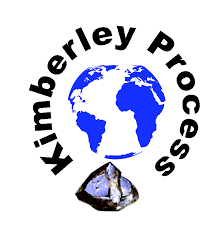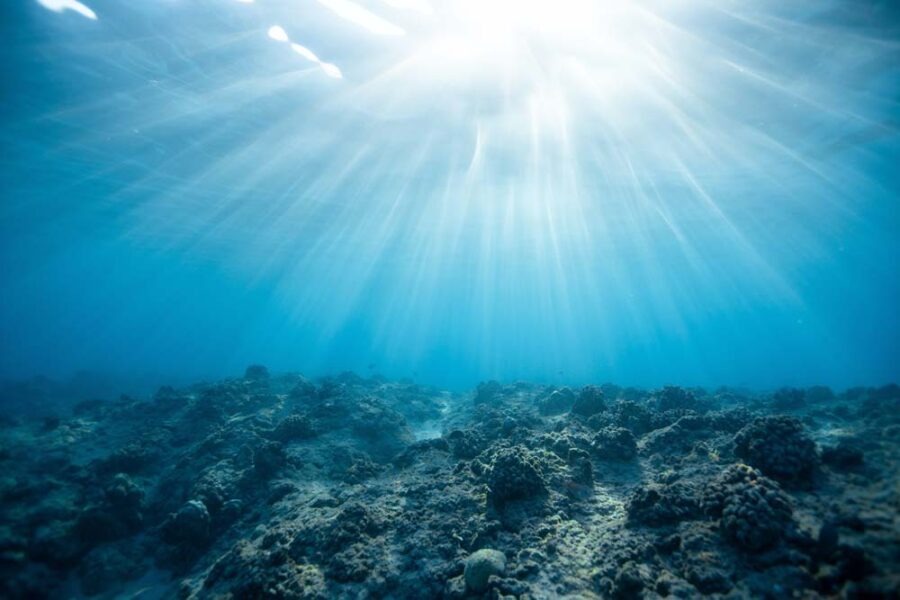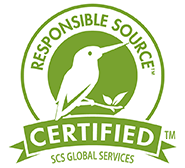WHAT ARE SUSTAINABLE DIAMONDS?
So, let’s be honest — the only 100% sustainable diamond is one that’s already in circulation. It’s an heirloom diamond, estate diamond, or any diamond that’s secondhand.
It’s a wonderful thing when we can take gemstones that are already out there and recycle or reset them into new pieces of jewellery. But since so many couples want a new diamond (a ‘fresh start’ to their new lives!), we argue that the next best solution when looking for eco-friendly diamonds would be to consider lab created diamonds.
Every year we see more people choose lab grown diamonds; in fact, this year jewellers around the country reported a 50% jump in lab sales compared to last year. It’s not just because they are a more sustainable choice vs. mined diamonds, but the sustainability factor is a big one. Here at Ethica Diamonds, ethical jewellery sourcing is very important to us, which is one reason we find lab grown diamonds so exciting.
DOESN’T THE KIMBERLEY PROCESS ENSURE THAT MINED DIAMONDS ARE ETHICAL AND SUSTAINABLE?
Mined diamonds pass through many hands, making origins murky. The Kimberley Process was developed to stem the flow of conflict diamonds, but with the convoluted supply chain — a mined diamond can pass hands nearly 2 dozen times — you really can’t be 100% sure that a mined diamond is conflict-free.
There is generally an exception for diamonds mined in Canada because their government is very strict with mining regulations. Even though we consider Canadian diamonds to be a more socially transparent mined diamond option, the impact of mining to the environment is still negative, with detrimental affects to the wildlife there.

WHAT ARE THE SUSTAINABILITY ADVANTAGES IN CHOOSING LAB CREATED DIAMONDS?
To get a decent picture of what lab grown diamonds' impact on the environment looks like, first it's helpful to make comparisons to the alternative, which is extracting diamonds from the ground through various forms of mining.
There are a lot of concerns around sustainability and environmental challenges related to diamond mining; these can be grouped into impacts on water resources, air quality, wildlife, soil quality, and climate change considerations, which we will explore below.
The DPA — Diamond Producers Association – represents seven of the world’s largest diamond miners, including Alrosa, Anglo American unit De Beers and Rio Tinto, which account for around 75% of world diamond production; naturally, they push back on sustainability claims against the mined diamond industry.
THE ENVIRONMENTAL IMPACT OF LAB DIAMONDS
- Energy usage: Most lab diamond growers require 250 - 750 kilowatt hours (kWh) to produce a rough carat. Fortunately, lab diamond companies are answering the call to reduce energy consumption by using more renewables to make the growing process more energy efficient.
DeBeers reports that their operations require about 80kWh per carat, however, it’s not believed that this is the full picture, as it does not account for the energy used in exploration and transportation to what are sometimes very isolated mining sites.
For perspective, the average UK household uses about 10-kilowatt hours per day.
THE ENVIRONMENTAL IMPACT OF MINED DIAMONDS
- Waste & water usage: A study comparing lab grown and mined diamonds by consultancy Frost & Sullivan found that mining diamonds produces 4,383 times more waste than growing diamonds. The same study revealed that diamond mining uses 6.8 times as much water.
The giant walls of waste that build up around mining sites — called tailings dams — are common relics left behind years after mining activities stop. They can have horrible consequences including collapse and destruction of life and property, like this tragedy reported in South Africa.
- Water quality: Mining affects water quality and the availability of water resources within the area. There is potential for acid mine drainage and contaminant leaching, and the erosion of soils and seepage of mine wastes into surface waters can be severe. For example, hundreds of cattle died after drinking water from the Odzi River in Zimbabwe, located downstream from a diamond processing plant.
- Biodiversity destruction: On average, mining companies move 250 tons of earth per carat of mined diamonds. Excavation and mining activities disturb land, often leading to biodiversity destruction and making the land unusable for any future uses — even after the mining operations are closed. For example, many famous mines such as the Mirny Mine in Russia (the second largest excavated pit on earth, it stopped open pit mining in 2001) continue to pose hazards. (This mine left such an enormous crater that it's been declared a no-fly zone for helicopters and aircraft because of the currents that can be created due to the size of the hole.)
- Seabed and marine life destruction: In marine mining, diamond deposits are sometimes found on the seabed, so seabed matter needs to be removed to access the diamonds beneath. The recovery process can take two to ten years.

The long-term consequences of marine mining are still unknown since this is a relatively new practice. Many environmentalists are also concerned by the impact of noise, machinery, and light on marine life, in addition to the challenges already posed by pollution and climate change.
- Air quality: Waste piles containing tiny particles are easily dispersed by the wind. The largest sources of air pollution are particulate matter and gas emissions from the combustion of fuels in stationary and mobile sources.
- Wildlife: Mining affects the environment through the removal of vegetation and topsoil, the displacement of fauna, the release of pollutants, and water waste, and the generation of noise. Wildlife also gets squeezed out by the human population as mining operations create environments unsuitable for the survival of many species.

- Soil quality and agriculture: Mining contaminates soil and the water table, impacting agricultural activities. Incidents like the Odzi River cattle death disaster have occurred throughout mining regions in Africa with limited water supplies. Local people, livestock, and wildlife have no choice but to drink contaminated water, and farmers must use it for their crops.
WHAT ABOUT HUMAN RIGHTS INTERESTS?
The list of hazards in diamond mining is extensive, ranging from mine explosions trapping miners and equipment accidents to workplace-induced illnesses such as tuberculosis, permanent hearing loss, slow poisoning, and increased cancer risk.
There have been many cases of human rights violations which have been repeatedly voiced by advocacy groups around the world. Working conditions in mines have often been brought to light as inhumane in many aspects. Complete and accurate statistics are not available because many of these accidents are not reported.
There are other issues such as child labour and exploitation of the workforce which continue to plague the mined diamond industry. In certain regions, there have also been persistent concerns about the source of diamonds with illegally traded diamonds being used to fund conflict in war-torn areas, particularly in central and western Africa (known as ‘conflict’ diamonds).
In fact, just recently Bloomberg reported on the secret supply of Russian diamonds entering the US marketplace post-Ukraine invasion.
ETHICA DIAMONDS USES CERTIFIED SUSTAINABLE MAUFACTURERS. WHAT DOES THIS MEAN?
Our jewellery is produced using the highest level of sustainability and full transparency. Our manufacturing facilities are certified by the Responsible Jewellery Council, and we get audits done regularly.
They are also members of SCS, who manage the ethical, social, and environmental risks associated with metals, mines and jewellery to help to distinguish products in the marketplace and helps to protect the reputation of manufacturers and retailers. SCS offers an array of environmental and social performance-based, third-party certifications to enable manufacturers to meet required protocols and transition to a circular economy.
Very strict ethics and sustainability regulations need to be met to follow their high standards, and audits are done by third parties.

DO YOU GROW YOUR OWN DIAMONDS?
We don’t grow our own diamonds, we source them from trusted suppliers who are utilising renewable energy or working towards it in the future and also adhere to regulations within the sector. Lab created diamonds require serious scientific laboratory equipment and expertise to produce, so we look to specialty growers.
WHO CARES ABOUT SUSTAINABLE DIAMONDS AND ETHICAL SOURCING?
Anyone looking for a timeless symbol to represent their relationship, a milestone in their life story or a very special gift for someone they love, whilst keeping their carbon footprint to a minimum and choosing products which define a better future.

Need a hand with finding your perfect ring? Our jewellery concierge are on hand to help with whatever you need. Simply contact us for one-to-one personalised help.
Read Next

Colour is the New Classic: Engagement Ring Trends to Watch
This summer, coloured engagement rings are taking over. Discover why modern couples are choosing lab-grown stones for their ethical beauty, individuality, and timeless charm.

Your Love Story, Uniquely Told: Three Ways We Make Engagement Rings Truly Yours

Ethica Collaboration With Joanna Lumley For Born Free Foundation
Ethica has created a unique pendant and the proceeds will support Born Free's conservation efforts, reflecting our commitment to giving back and making a positive impact.


